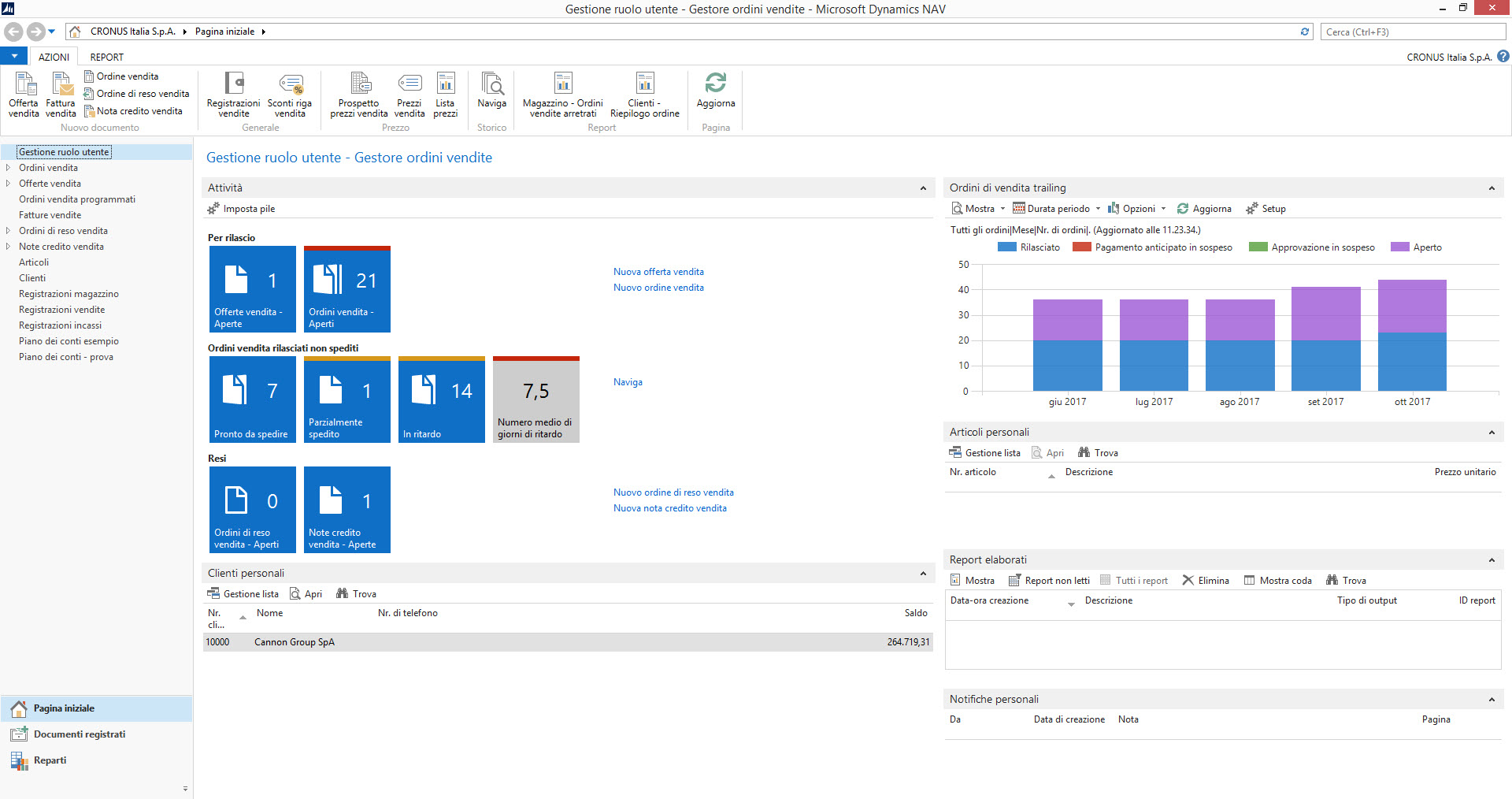Microsoft Dynamics NAV

Microsoft Dynamics NAV (formerly Navision) is a quick-deployment and easy to use ERP (Enterprise Resource Planning) solution* with more than 100.000 references and localised in 44 different Countries.
This leading solution in the SMB market provides small and medium businesses with a powerful and convenient product that can be customised according to the needs of the company and the sector. Navision, in addition to being multi-company and multilingual, can be easily adapted to the growing demand of efficiency and features of the expanding businesses, and is compliant with tax requirements in Italy as well.
The user experience includes the access to corporate views and processes customised according to roles set in Role Center to provide employees with the proper information and tools their roles require.
Dynamics NAV satisfies the needs of SMBs, in particular:
- Dynamics NAV satisfies the needs of SMBs, in particular:
- Accounting
- Purchases and Sales
- CRM
- Logistics and Stock
- Production
- Orders and Projects
- Support management
Accounting:
- Multi-dimensional and multi-currency accounting;
- Intercompany management;
- Multi-company consolidation;
- Cash-flow management;
- Asset management;
- Bank reconciliation, bank transfers (SEPA), bank receipts and RID;
- Reclassification of financial statements and budgets.
Purchases and Sales:
- Active and passive cycles management;
- Price lists and discounts (per article, client, group of clients);
- Sales kit;
- Intrastat management;
- Management of deductions and INPS taxes;
CRM:
- Contracts and organization;
- Opportunities management;
- Creation of marketing campaigns and contacts profiling;
- Outlook integration.
Logistics and Stock:
- Multi-site stock Keeping Units management;
- Transfers between warehouses and stock planning;
- Cross reference management;
- Article tracking management (per batch and serial number).
Production:
- Order management, requirements and production progress;
- Management of bills of materials and production cycles;
- MPS (Master Production Schedule) and MRP (Material Resource Planning);
- Management of work areas, work cycles, work centres and finite capacity resources;
- Production demand forecasts;
- Production orders tracking;
- Work account management.
Orders and Projects:
- Invoicing and accounting of orders and projects;
- Budget and estimates management;
- Phase, task and step management and evaluation and control units subdivision;
- Timesheet management.
Support management:
- Articles, prices and assistance orders management;
- Support contracts management;
- Interventions planning and execution;
- Resource planning.
* ERP stands for Enterprise Resource Planning. It’s a management system that integrates all relevant business processes of a company: purchases, sales, stock management, accounting, and so forth.